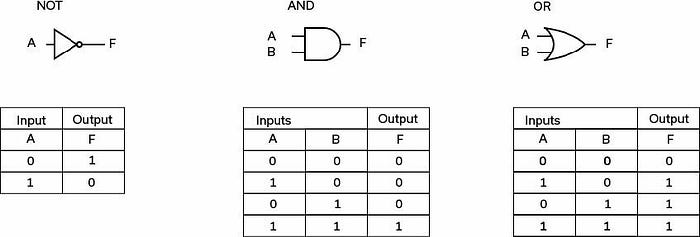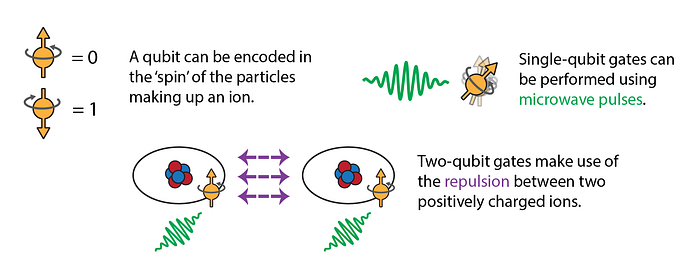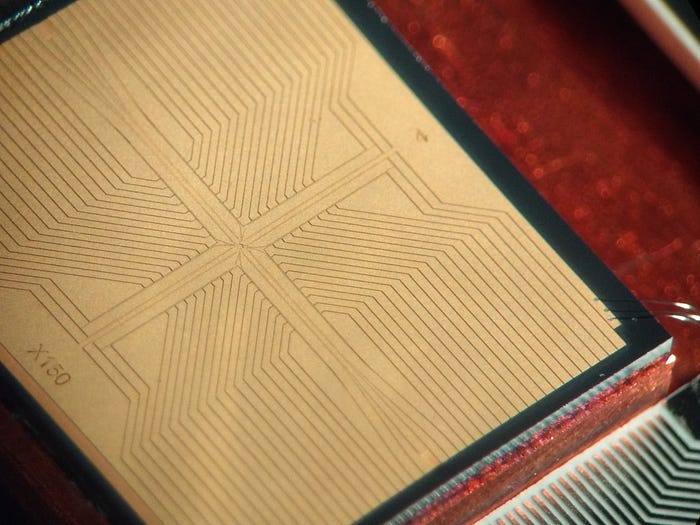Quantum computers regularly hit the headlines, promising to impact everything from drug discovery to aviation.
But how do they really work? Quantum logic gates are one of the essential parts of a quantum computer and are the building blocks of all quantum algorithms.
Traditional logic gates
First, we need to understand how traditional computers work.
Traditional computers use electrical signals that represent binary 1s and 0s, or bits. Logic gates are the fundamental operations that allow these bits to change between 0 and 1, and a range of examples exists such as 'AND', 'OR' and 'NOT'.
For example, a NOT gate changes a bit from a 0 to a 1 (or vice versa). AND and OR gates are two-bit gates that take two bits as inputs and output a single bit, depending on the inputs.
A surprising fact is that all possible processes, from simple addition on a calculator to browsing Facebook, can be constructed from a small set of these gates called a 'universal gate set'. In other words, you should be able to run any possible algorithm using a universal computer — an observation first made in 1936 by Alan Turing.
This is what allows your computer to carry out such a wide range of seemingly very different tasks. A set consisting of AND, OR and NOT is an example of such a universal gate set.

Quantum logic gates
Quantum computers operate using qubits, not bits. Unlike traditional bits which can only be 0 or 1, a qubit can exist in a 'superposition' of 0 and 1. This ability to exist in multiple states at once gives quantum computers tremendous power.
But a qubit is useless unless you can use it to carry out a quantum calculation. And these quantum calculations are achieved by performing a series of fundamental operations, known as quantum logic gates.
There are lots of types of quantum gates. There are single-qubit gates, which can flip a qubit from 0 to 1 as well as allowing superposition states to be created.
Then there are also two-qubit gates. These allow the qubits to interact with each other and can be used to create quantum entanglement: a state of two or more qubits that are correlated in a way that can't be explained by classical physics.
You may have heard of entanglement. It can lead to counterintuitive quantum phenomena that Einstein once famously called "spooky action at a distance", although the logic behind that statement is more complicated than it appears.
An example of a gate is the controlled-NOT (CNOT) gate. It's a two-qubit operation where the first qubit is labelled the control qubit and the second one is the target qubit. If the control qubit is |1> then it will flip the target's qubit state from |0> to |1>or vice versa.
(Note: the | and > used in the notation are just to remind us that we're talking about vectors that represent the qubit states labelled 0 and 1. There's a lot more information in this tutorial.)
Similar to traditional computers, quantum algorithms with many qubits can be broken down into a sequence of single and two-qubit quantum gates, forming a universal quantum gate set.
Therefore, if we can get these quantum gates to work in a reliable way that scales to many qubits, we can use them to run all possible algorithms on our quantum computer.
Quantum gates in trapped ions
Trapped ions (charged atoms) are one of the leading platforms for quantum computing.
Each ion can store a single qubit, which is encoded in two atomic states related to a uniquely quantum property of the particles making up the ion (electrons, protons and neutrons) called 'spin'. These spin states are well isolated from the outside world, protecting them from any noise that could destroy the fragile qubit states.
So how do we implement the required quantum logic gates on these trapped-ion qubits?
For single-qubit gates, it's actually quite straightforward: we apply a short pulse of microwave radiation. If the frequency of the microwave exactly matches the resonant frequency of the qubit, it will cause the qubit state to flip. We can also create superposition states in the same way by adjusting how long the pulse lasts.
For the two-qubit gate, things are not so easy, since the spin states used to store the qubits don't naturally interact with one another. The ions themselves do interact, however — they repel each other due to both having a positive electric charge, in a similar way to the repulsion between two bar magnets with their north poles facing each other.
We can use this repulsion to engineer an artificial interaction between the qubits. This can be achieved in a few different ways, including using high-power lasers or using specially shaped magnetic fields combined with microwave pulses.
At Universal Quantum, we use the latter approach, which means all of our gates are laser free — an attribute that we believe makes it easier to scale to millions of qubits.

Techniques to improve quantum gates
As you've hopefully gathered from the previous sections, quantum gates are an essential part of quantum computers.
Therefore, as we scale up to millions of qubits, it's crucial that they work extremely reliably.
The reliability of quantum gates can be improved using so-called 'quantum control methods', which modify the microwave pulses to make the interaction more protected from noise in the environment.
A recent paper from the University of Sussex (the research group of Universal Quantum's co-founders) unites a number of quantum control methods under a single framework, allowing their effect against different noise sources commonly encountered in the lab to be directly compared.
This paper helps scientists better understand how we can build and compare quantum computers. It's an important feat because there are many ways to make a quantum computer — and no one truly understands which design will succeed and reach the million-qubit scale. So, we need to compare designs to understand how different ideas measure up.
The quantum gate discussed in the paper (the Mølmer-Sørensen gate) is the two-qubit gate that's used in the majority of ion trap groups (like us).
Since it's the workhorse of trapped ion two-qubit gates, it's vital to understand how we can improve this quantum gate to continue moving this technology forward.
If you'd like to keep track of Universal Quantum's journey to millions of qubits, you can follow us on Twitter, LinkedIn and Medium.

